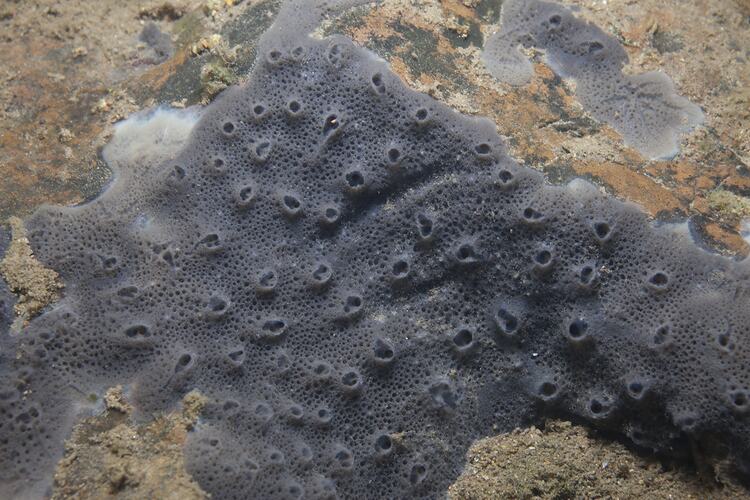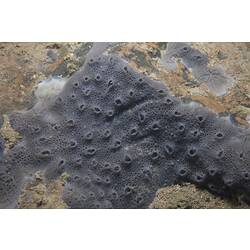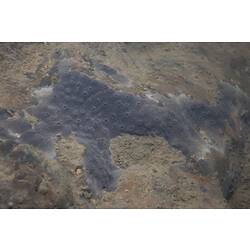General Description
Encrusting sponge.Typically grey. Size can vary from small patches under a centimetre across to patches over 10 cm in diameter.
Biology
Freshwater Sponges are generally not found in deep water and prefer firm substrates for attachment e.g. stones, logs. This species encrusts the lower sides of underwater rock faces and boulders in rivers and creeks, particularly where there is strong water flow.They filter food such as bacteria and other small organic particles by drawing the passing water into their inlets and internal channels. Some freshwater sponges host algal cells and can be green in colour. In Australian freshwater sponges, reproduction usually relies on the presence of resting bodies or gemmules. These are small (1 mm) spheres with a tough outer skin covering a mass of undifferentiated sponge tissue. They resist unfavourable environmental conditions, remaining viable after the majority of the rest of the sponge has died. Most sponges live in marine systems rather than freshwater.
Distribution
Eastern Australia.
Habitat
In rivers and creeks on the underside of rocks.
More Information
-
Animal Type
-
Animal SubType
-
Brief Id
Encrusting sponge forming a typically grey layer over underwater rock faces.
-
Colours
Grey
-
Maximum Size
10 cm
-
Habitats
-
Diet
Organic matter
-
Endemicity
-
Commercial
No
-
Taxon Name
-
Scientific Author
Racek, 1969
-
Common Name
Sponge
-
Phylum
-
Class
-
Family
-
Genus
-
Species Name
lanei



